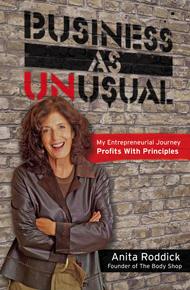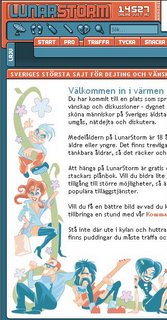This article explores the second of seven Web 2.0 characteristics of future education: building professional networks of trust.
The idea
The idea is to enable greater outreach and feedback on the use of student core competencies, with trust as the unique, hard-to-recreate asset, using Web 2.0 Educational Services to increase network value and social capital as more people join in. (Image from Streetstar).
Building trust for Web 2.0 Educational Services
Trust can be said to grow from a sense of shared meaning, which in turn enables shared action. Naturally, this can be done in a variety of ways. One inspiring example comes from streetdancing, a no-rules form of dancing with a lot of attitude and positive energy. As with other sub-cultures, its provides a cristal ball look into the future on what attracts youth of today. What can we learn from streetdancing when trying to generate shared meaning and shared action? How to apply this insights when developing Web 2.0 Educational Services? Why is building trust important? Starting with a presentation of streetdancing, these questions will then be addressed in turn.
Come on, be a Streetstar!
Streetstar is a Scandinavian streetdance competition in Stockholm, Sweden, populated by a multicultural crowd of young people competing for a place in the European final of Juste Debout in Paris. On a question on what builds trust among the participants, Streetstar´s creative director Joachim Hövel says:
- It´s dancing. That is what brings them all together.
The contestants “battle” 1 to 1, or 2 against 2, on the floor of an indoor sports arena by improvising to music played by a DJ. Their performance is judged by a professional jury and the winner gets to dance again. This is repeated all the way to the final. Rap artists lead the show, professional hiphop dancers perform and nothing but limonade and chocolate cookies are for sale in the improvised cafeteria. The Streetstar event involved competitions in the following categories:
- Newstyle/hiphop: fast pace with a lot of foot-work, goes with modern hip-hop music.
- House: rhythm and groove with step- and jazzdancing, goes with house-clubs music.
- Popping: formerly called electric boogie, goes with funk music from the 60s and 70s.
- Locking: attitude and energy, goes with funk music.
After about an hour of electrified competition there is a 30 minutes recess during which the crowd enters the floor. Improvising to the DJ´s music, spontaneous rings are formed around dancers wanting to show their moves. The intensity of the dance is such that each dancer perform his improvised moves for not more than a minute before next dancer takes over. It is like jazz musicians taking turn during a jam session. The good dancers attract attention, while the not so good attract less or none.
Lessons learned from Streetstar the competition
Trying to bring out the key components of building shared meaning, William Isaac´s “four-player model” comes in handy. Streetstar the competition creates a stage for interdependent roles, such as “movers, opposers, followers, and bystanders”.
The movers (“I advocate this”) are the first one to battle, followed by the opposer (“I do not agree, and let me explain why”) improvising moves in his/her way. The followers (“I support this idea”) are the members of the jury, as well as part of the crowd competing later on. The bystanders (“Here is how I am seeing what seems to be going on”) are the rest of the crowd enjoying the show.
As in a genuine dialogue, these are not static roles. More or less naturally, the crowd of streetdancers take on new roles when they feel the need for a shift of energy. This is key. Building shared meaning is about allowing for participants to take on all four interdependent roles and helping the person to learn from their own experience. A problem with teaching is that it is almost always all about the teacher and the teaching, and not the student. This is not helped by most workplaces and educational settings being characterized by rigid roles.
Igniting the passion of young (and not so young) people
Identity, recognition and respect. If that is what modern youth is on the look out for, workplaces and educational settings not catering for these underlying desires are not likely to ignite their passion. One way to counteract this development is to intergrate streetdance qualities in student driven Web 2.0 Educational Services, such as a blog.
Students developing customer-oriented blogs would need to shift roles among themselves, as movers, opposers, followers and bystanders, to keep energy levels high. They would need to clarify the rules of the game, so everyone can join in on the same premises, just like the Streetstar competition. Moreover, they would need to build shared meaning on how customers may contribute to their Web 2.0 Educational Service, shifting from bystanders to, hopefully, followers, but also act as movers and opposers. In turn, this would require students to adapt a strategy that really understand their customers in terms of:
- What they need within the student´s area of competence
- How they interact with the blog content
- What interest they have to alter and improve the blog content
- What other services they want besides educational services
Building trust is cost-efficient
”It´s sexy to want to change the world”. That is what Bono, the U2 singer said at the Davos World Economic Forum 2006 when launching the Product Red series, using commerce to beat poverty. The success of it all builds on trust, a trustworthy sender. Product Red consumers demonstrates who they trust to fix the world problems we are facing. It is not governments or promising new technology, nor corporate leaders or rock artists. It is us, you and me, integrating the role of a consumer with that of a responsible citizen.
“No one project or organisation is the solution”, the American writer and media producer Jim Wine wrote to me in a personal e-mail exchange. “There is too much to learn, too much to do. Collective learning is the fundamental. It is teams embedded within larger networks that drive learning and change.” Again, interpersonal trust is, most probably, what makes these teams function at all. In addition, it is a cost-efficient and necessary ingredient in any effort of creating positive change.
If not anything else, Web 2.0 Educational Services could help students, and their customers, (re)build social capital, "the very fabric of our connections with each other", "creating value for the people who are connected and – at least sometimes – for bystanders as well”. Read more about 150 ways of building social capital yourself.
Coming up
For more on the seven future forms of education outlined above, follow this blog. The next one coming up is: 3) Tailor-made learning units.
Reference:
William Isaac (1999), Dialogue: The art of thinking together , foreword, XVIII
SvD (2006), Streetdansfestivalen och alla stilarna man tävlar i





